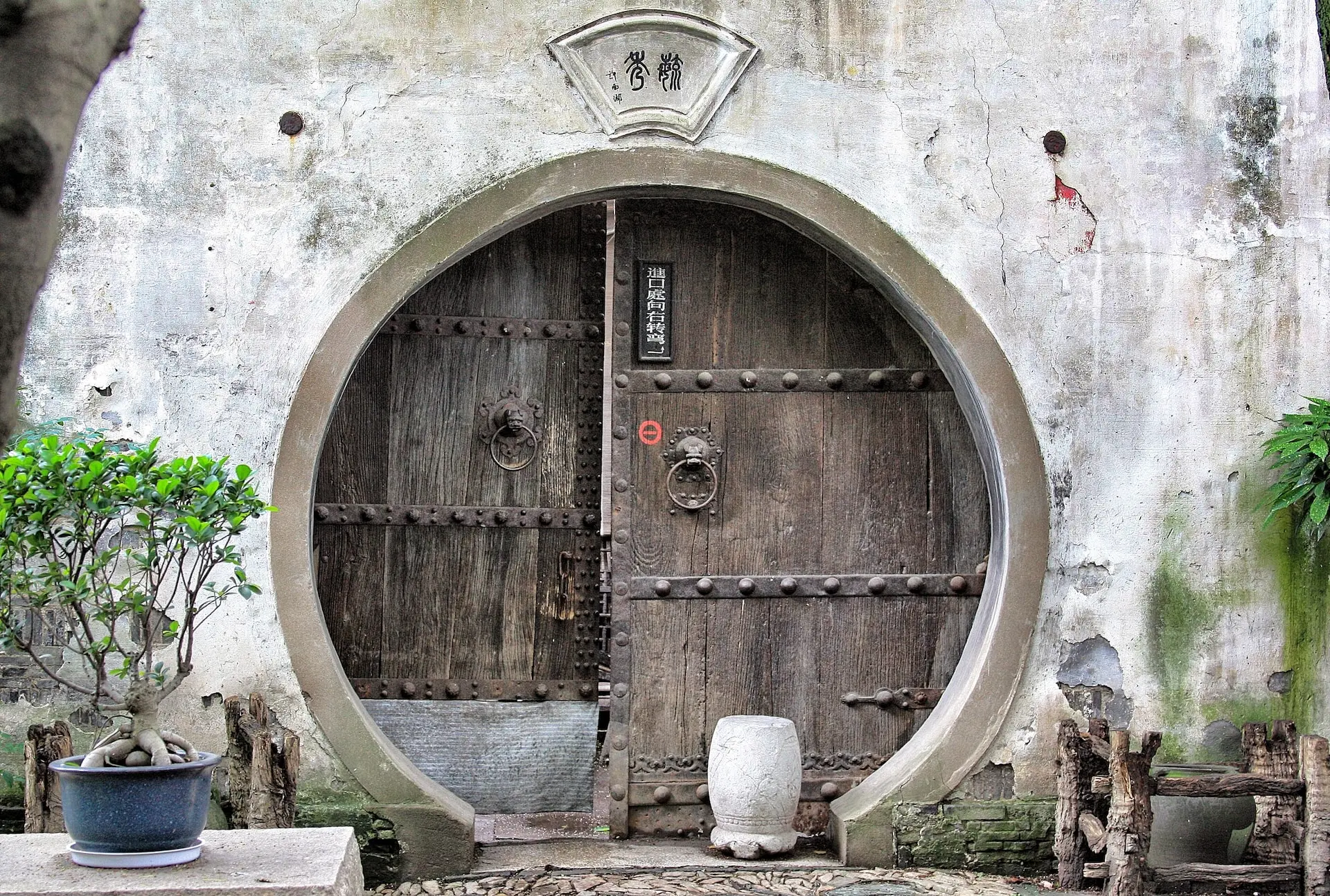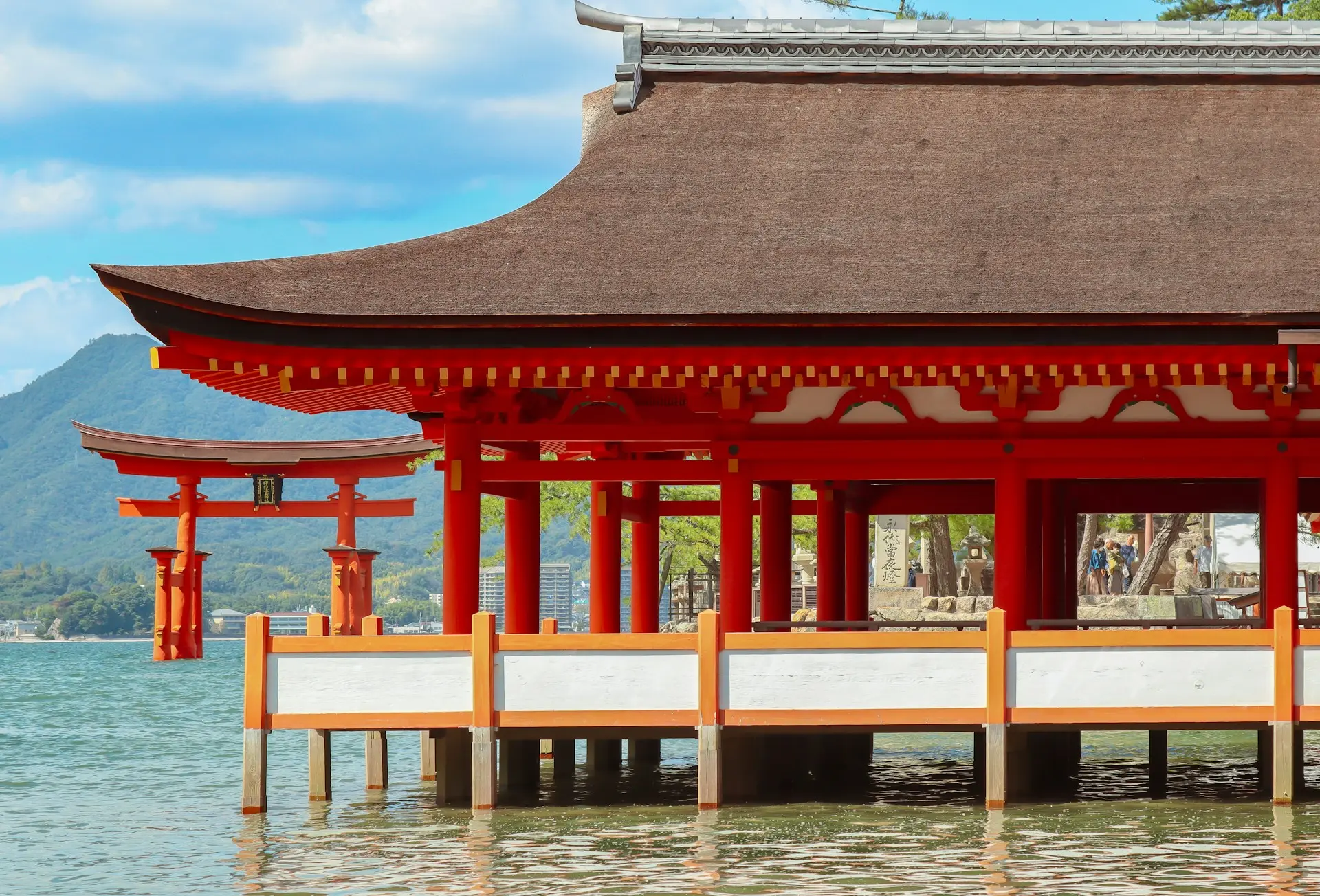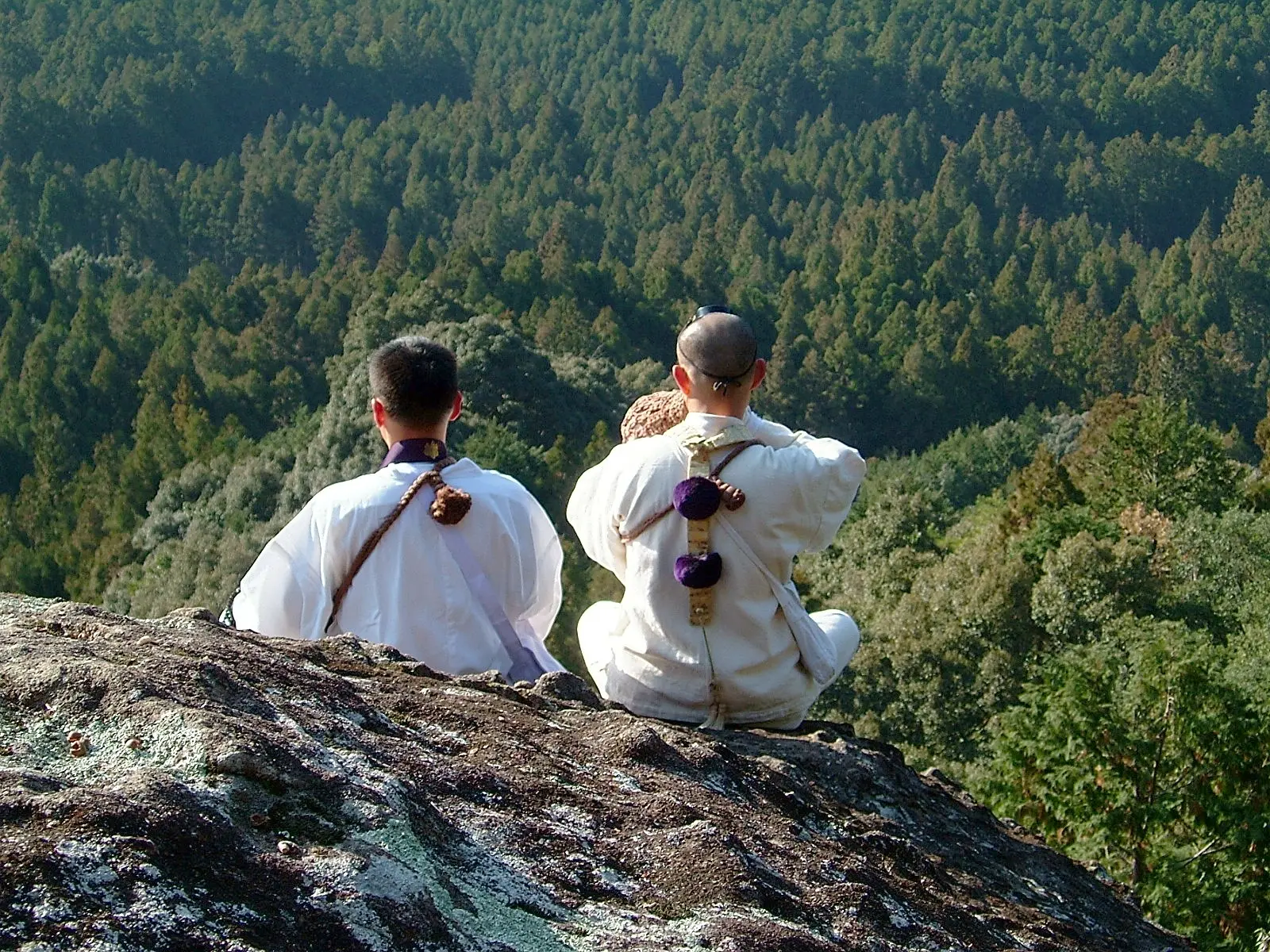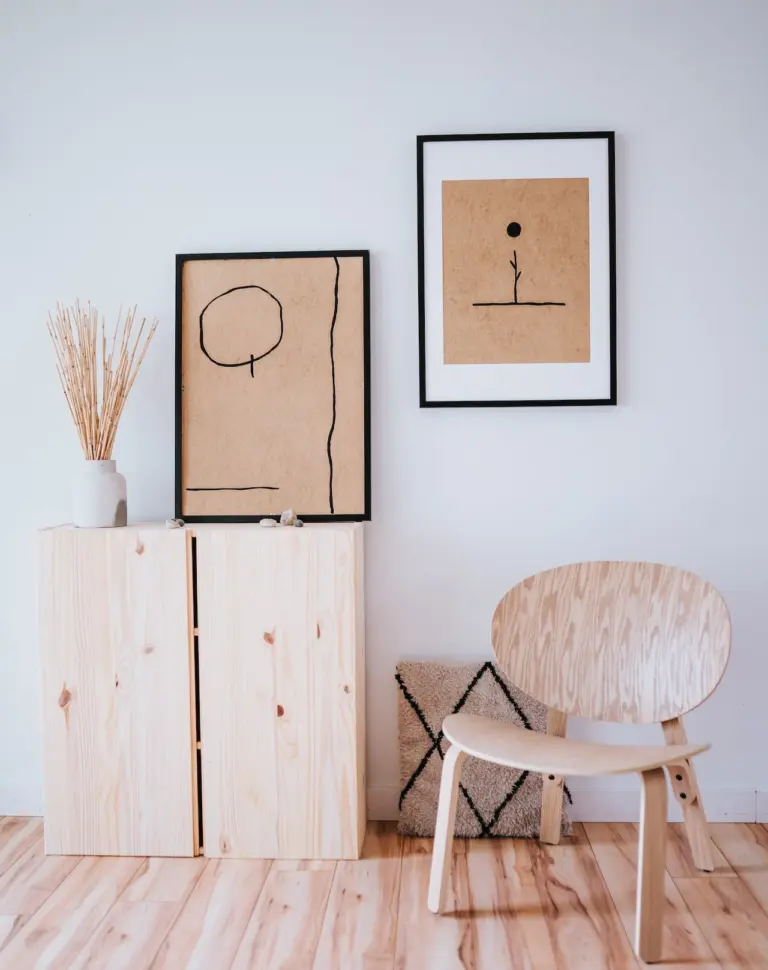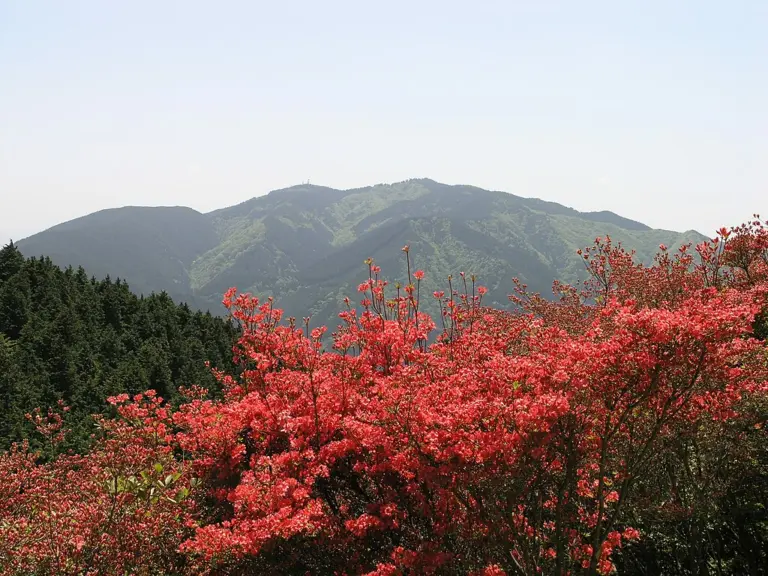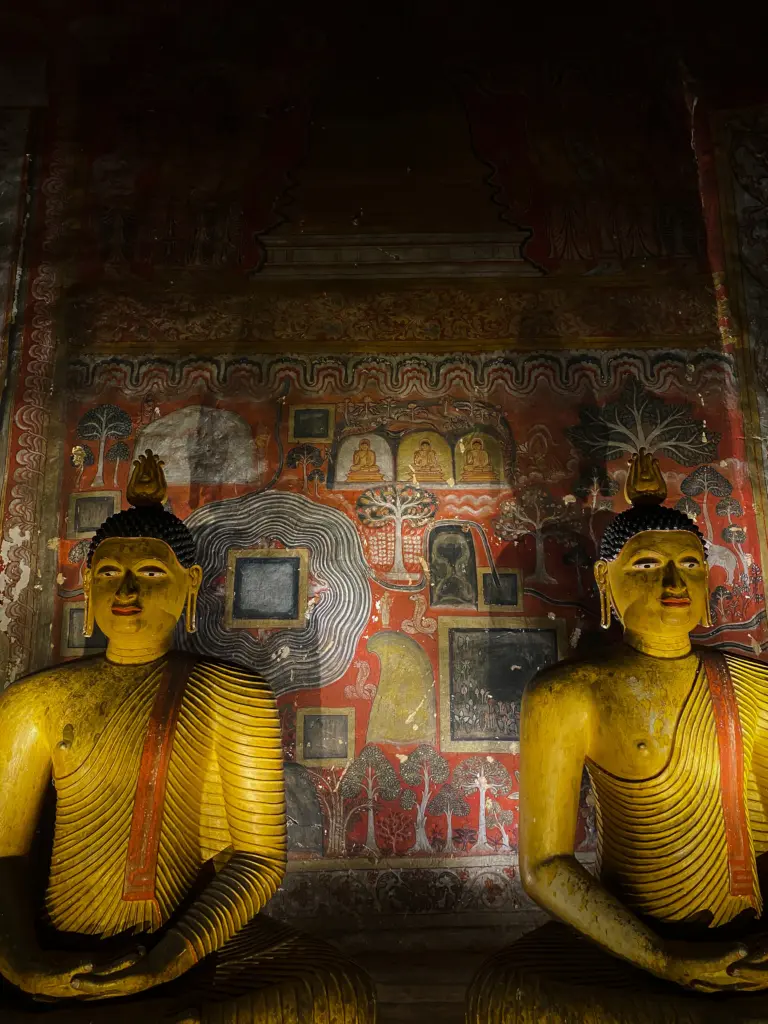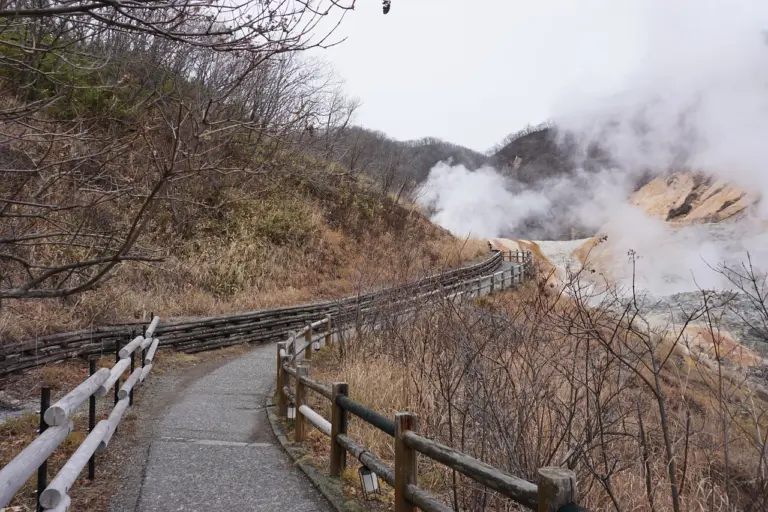Planning a trip to Siem Reap and wondering which Angkor temples are must-see? Well look no further! After 4 days of extensive exploration, we covered not just the major temples but even the most hidden corners of Angkor Park and beyond!
We left no stone unturned as we cruised around the jungles on our e-bikes, and now I’ve carefully curated a list of temples that you absolutely can’t miss with plenty of pro-tips for a worthwhile visit!
If you’re interested in following our route, you can find our cycling itinerary here.
Now, before I delve into our list, you should know that we didn’t just pick any temples. To make it onto this list, each temple had to meet strict criteria. It needed to impress with its architectural splendor, captivate with its historical significance, and enchant with its surrounding natural beauty.
Let’s dive in, shall we?
Table of Contents
ToggleWhere to Stay in Siem Reap
Siem Reap is a very small town and you can find most places close to each other and all within 15 – 30 minutes from Angkor Archaelogical Park. Here are some of my recommendations:
Best Hotels in Siem Reap
- Han & Daniel Villa Boutique – this is where we personally stayed and what can I say except that it was a blast! The location is conveniently located near most of the sites that we went to around town such as the Phare Circus and the e-bike rental shop. The rooms were spacious and a good bathroom. The beds were great too. They had parking spaces for our bikes with an in-house restaurant for whenever we were lazy to get food outside. Daniel kindly helped us with a lot of stuff too such as an airport pick-up, airport drop-off, and helping us get tickets to Angkor Archaeological Park. The best part was the pool which we were taking a dip in every day!
- Two Seasons Siem Reap Hotel – offers an outdoor pool, free private parking, and a range of services including room service, a 24-hour front desk, and free WiFi. The rooms are air-conditioned, with a desk, flat-screen TV, and private bathroom.
- Damrei Residence & Spa – offer a flat-screen TV, and a seating area. You can enjoy the garden or city views while relaxing with a cup of tea. All rooms have a private bathroom with bathrobes, slippers, and complimentary toiletries.
- Onederz Hostel Siem Reap – a clean, comfortable, and friendly place to stay. With its well-designed layout and premium amenities, including three swimming pools, this hostel offers a high-quality experience.
- Mad Monkey Siem Reap – offers a range of room options, a fantastic pool, and an incredible bar and restaurant serving both local and Western cuisine. At Mad Monkey, you’ll have the opportunity to connect with fellow fun-loving travelers from all around the globe.
- Lub d Cambodia Siem Reap – featuring a Khmer-chic inspired design, Lub d Siem Reap boasts a swimming pool with a swim-up pool bar, inviting lounging areas, and a games area with a pool table and Pacman arcade game. You can indulge in all-day breakfast, expertly brewed coffee at The PumpHouse, and quick snacks from the Grab & Go counter.
13 Best Angkor Temples in Siem Reap
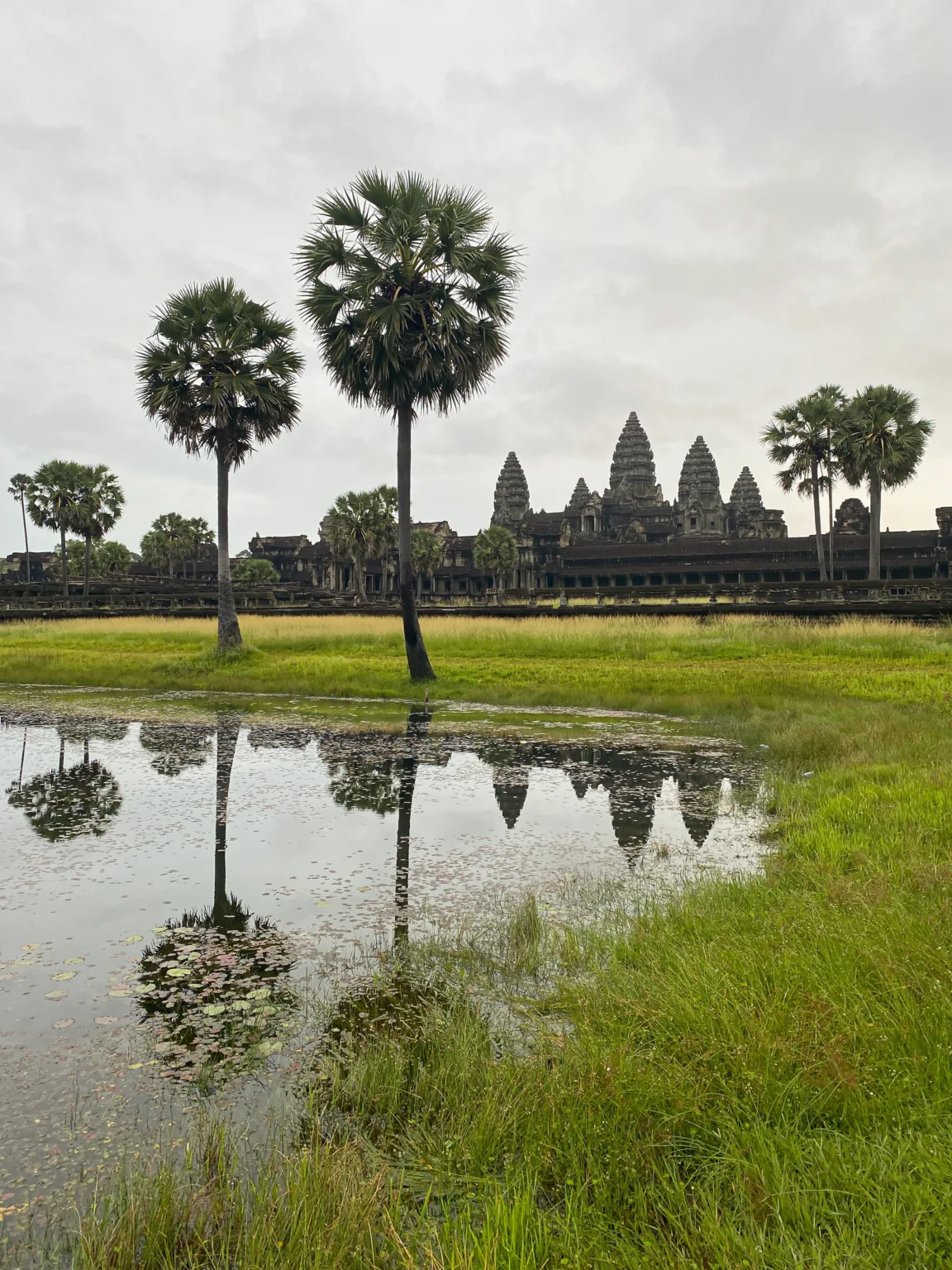
1. Angkor Wat
It’s impossible to begin this list without the crown jewel of Siem Reap – Angkor Wat. This temple is it, it’s why you’re in Siem Reap, the one temple that likely springs to mind when you think of Cambodia. It’s renowned, it’s majestic, and let me tell you, it lives up to the hype.
Angkor Wat, or the “City of Temples,” is staggeringly huge, making it the world’s largest religious monument. It’s a whole temple city sprawled across 400 acres. Walking around, you can almost picture the ancient life that once was.
Catching sunrise at Angkor Wat has become something of a tradition. It’s one of those moments where you can’t help but pause. As the sun peeks over the horizon, the temple silhouette gradually brightens against the dawn sky, casting a mystical aura around the entire scene. It’s a sight that sticks with you. There’s no other way to put it: it’s a life-affirming, bucket-list worthy spectacle.
Inside, it’s a labyrinth of stories. Detailed stone carvings adorn the walls, each one narrating its own tale – to the Apsara dancer carvings and the mythical tale of the Ramayana. It’s like the walls have a voice of their own, whispering tales of times long past.
Angkor Wat is not just a temple, it’s a journey into a forlorn kingdom lost in time. Every corner has something to discover, every pathway a new surprise.
Simply put, Angkor Wat is an experience you don’t want to miss.
If you want a more in-depth guide on Angkor Wat, you can check out my article here.
Here’s also how to catch the sunrise in Angkor Wat without relying on a tour or tuktuks.
What to Know Before Visiting Angkor Wat
Location: Angkor Wat
Opening Hours: 5:00 AM – 7:00 PM
Pro-tips:
- There’s more to Angkor Wat than just the main temple, explore the moats, the jungles, and the surrounding buildings.
- Wake up around 3:30 AM – 4:00 AM to get a good spot to catch the sunrise.
- You can technically enter earlier through a side entrance that’s different from the main bridge’s entrance.
- The time to climb up the towers of Angkor Wat is a bit later than the opening so stick around longer to see the best views in the house.
- Angkor Wat during sunset is also a thing and you can beat the crowds during this time!
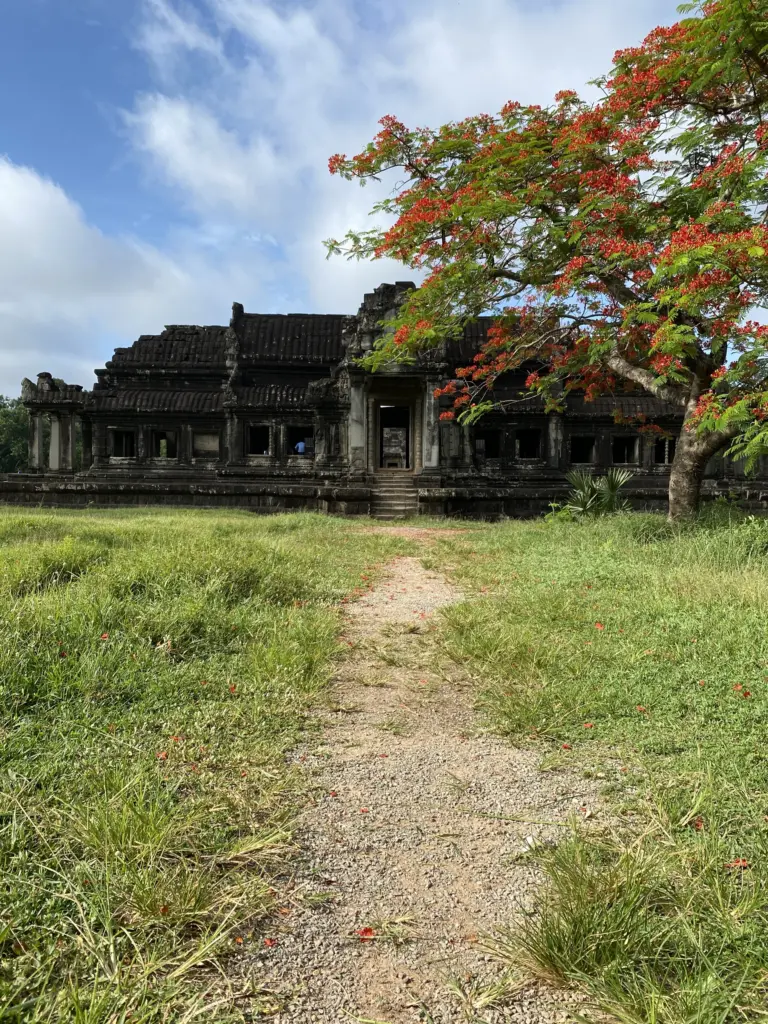
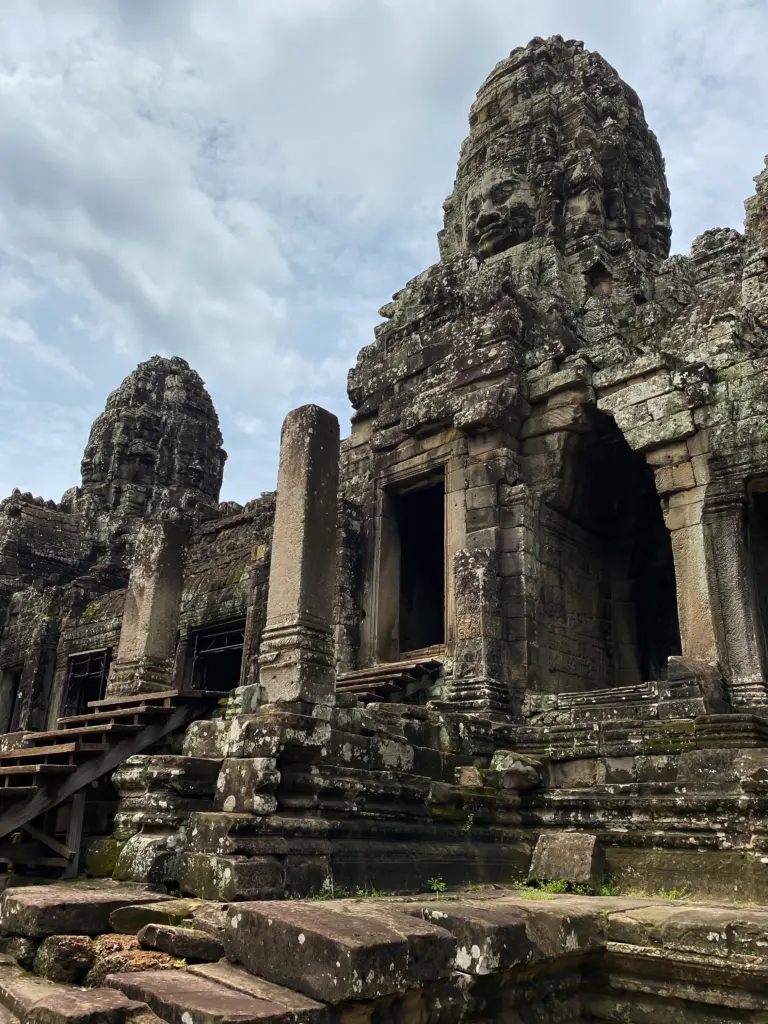
2. Bayon Temple
Next is the mesmerizing Bayon Temple. If Angkor Wat felt like stepping into a grand history book, then Bayon is like entering a mystic puzzle. Known for its gigantic face towers, it’s one of those places that’s guaranteed to leave you intrigued, no matter how many times you visit. We accidentally came here first on our first day and ended up getting pulled in completely.
It’s at the heart of Angkor Thom, the last capital city of the Khmer empire. The magic of Bayon lies in its uniqueness; this is a temple with character. And I mean that literally.
As soon as you enter, you’ll be greeted by a surreal spectacle: more than 200 massive stone faces staring back at you. Each of these face towers is meticulously carved with a serenely smiling face – giving the impression that they’re almost alive, watching over the temple city with quiet benevolence.
You might find yourself asking: who are these faces, anyway? According to our guide (it was the only time we got one just because I was so curious), they’re either depictions of Jayavarman VII, the king who built Bayon or they can also represent the bodhisattva of compassion, Avalokiteshvara. Well, the truth is shrouded in mystery but either way, it’s one of the coolest temples we’ve visited in Angkor Archaeological Park.
Navigating through the narrow passages and steep stairways of Bayon feels like a adventure. It might seem confusing at first, but that’s part of the charm. You’re not just observing history here, you’re living it.
You can read more about the facts and symbolisms of Bayon Temple here.
What to Know Before Visiting Bayon Temple
Location: Bayon Temple
Opening Hours: 7:30 AM – 5:30 PM
Pro-tips:
- Bayon Temple has numerous entrances and depending on which direction you enter, the experience is totally different! The first day we didn’t realize we entered from the back side, the third day we went back through the front and it was like a whole ‘nother temple!
- Bayon Temple is one of the best temples to practice photography composition, you can utilize the geometrical square framings, symmetrical shapes and abstract minimalism to create powerful photos.
- If you’re open to it, having a guide can be interesting as there are so many secrets around Bayon that we would have missed otherwise, including photo spots! In the end, we had to cut the tour short as we felt like we were being shepherded too much.
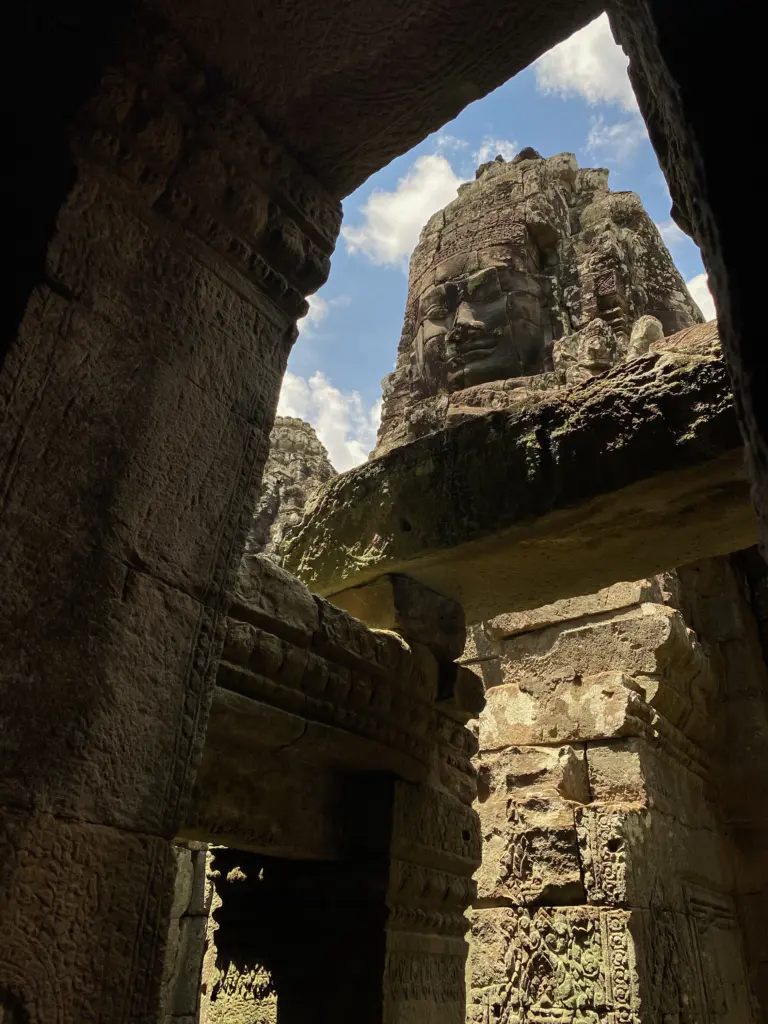

3. Ta Prohm
Ta Prohm was definitely the highlight of the day, it really stood out in Angkor Park. Hidden deep in the jungle, we made our way and parked our bikes where a couple of tuktuk drivers were also parked.
As we made our way deeper into the woods, we started to hear music. Just around the corner was a small band playing Cambodian traditional instruments, some of them were even handicapped, so we left a small donation for the relaxing atmosphere and continued on.
The temple was still mostly empty surprisingly, what makes Ta Prohm truly unique was the vegetation growing out of everywhere. Almost like the temple and the jungle were merging into one. It had numerous humongous trees perched on top of various parts of the temple. The vibes here were so different compared to any other temple we visited that day, the energy was immense, like we were no longer in Angkor Park.
There were moss covering almost every wall and these white trees and its roots that seemed to twist and turn into various shapes, swallowing the temple whole. It really made me wonder just how did things end up the way they did and how long did it take to even reach this state?
If you want to learn more about Ta Prohm, I’ve written a much more in-depth article here.
What to Know Before Visiting Ta Prohm
Location: Ta Prohm
Opening Hours: 7:30 AM – 5:30 PM
Pro-tips:
- Don’t be afraid to stray from the main route and explore other spots as you’ll find plenty of interesting spots with much more.
- The long hall (you’ll know it when you see it) makes for an excellent photo spot that’s not found in any other temple.


4. Pre Rup
At number 4 is Pre Rup, literally translating to “turn the body,” is believed to have been associated with ancient funerary rituals. This might sound a bit eerie, but once you’re there, the overwhelming sensation is one of tranquillity.
Even from afar, Pre Rup stood overbearing. One of the most prominent temples to watch the sunset and with good reason. It was probably the tallest temple we have seen.
Having multiple floors with giant steps that extended towards the sky. It had numerous towers and pillars with a distinguished arrow-like roof. It also had elephant statues on some corners.
I have seen pictures of Pre Rup online and the crowds were insane as most of the tours end up here towards the end of the day for sunset.
Thankfully, it was absolutely empty while we were here, I can’t even begin to be grateful for such a rare experience. We climbed to the very top part and were able to take awesome photos.
If you’re interested in learning more about Pre Rup, you can click here.
What to Know Before Visiting Pre Rup
Location: Pre Rup
Opening Hours: 7:30 AM – 5:30 PM
Pro-tips:
- Pre Rup is one of the best spots to watch the sunset in Siem Reap. It’s at a higher elevation than most temples and you can climb even higher to watch the sun set on the jungle horizon.
- With that being said, it’s better to save this temple for the later part of the day though it’s where most tours end as well so crowds might get nasty. Getting there earlier can help secure you a good spot.
- Pre Rup is one of the most fun temples to climb with epic views, take the time to sit down and meditate, you’ll feel like royalty!


5. Banteay Kdei
Banteay Kdei is a Buddhist temple known as the “Citadel of Chambers.”
Banteay Kdei doesn’t jump out at first glance. It’s more subdued, nestled in a serene forest setting, its towers and walls partially reclaimed by the surrounding nature.
This temple’s name gives a clue about its structure. It’s a winding complex with a series of interconnected chambers and courtyards that invite you to explore. The labyrinth-like layout adds to the sense of mystery and discovery as you wander through the site.
Near the end of your exploration, don’t miss the “Hall of Dancers,” where beautiful apsaras (celestial dancers) are carved into the stone, their graceful forms adding an artistic flourish to the enduring stone.
What to Know Before Visiting Banteay Kdei
Location: Banteay Kdei
Opening Hours: 7:30 AM – 5:30 PM
Pro-tips:
- It’s super fun to get lost around the endless chambers of Banteay Kdei, just go in and wander aimlessly, you’ll find plenty of surprises in store.
- The halls extend towards the four directions, though most of them are quite similar, it does take time to explore each side so plan ahead if you’re short on time.


6. Preah Khan
King Jayavarman VII, the same guy who gave us the Bayon and Ta Prohm, built Preah Khan or “Holy Sword” as a nod to a significant victory in a battle long past. But don’t worry, today’s vibes are a lot more peaceful. As you stroll around, you’ll encounter soothing corridors with trees that have become one with the temple walls.
But there’s more to Preah Khan than just eye-catching trees. It used to be a place buzzing with scholars. Over 1,000 teachers were reported to have taught here. So, as you walk through its wide spaces, you’re actually following in the footsteps of the ancient wise ones.
What to Know Before Visiting Preah Khan
Location: Preah Khan
Opening Hours: 7:30 AM – 5:00 PM
Pro-tips:
- The main highlight would be the trees covering the walls, quite similar to Ta Prohm.
- Get closer and scrutinize the walls to find really intricate carvings of Apsaras!


7. Neak Pean
Ready for a change of pace? Head to Neak Pean, the gem of Angkor’s artificial islands. No grand towers or epic bas-reliefs here. Instead, Neak Pean offers something else entirely – a glimpse into the ancient Khmer’s spiritual relationship with water.
Neak Pean, or “The Entwined Serpents,” takes its name from the naga sculptures that decorate the site. For us though, we just call it the “Water Temple.”
This unique temple was designed as a place of healing. According to the ancient belief, the waters of its central pool could cure diseases. Can you imagine coming to this tranquil spot seeking a cure, surrounded by the dense jungle and guided by the wisdom of ancient traditions? I’m pretty sure, it’ll do wonders!
Built in the 12th century, the temple consists of a central pool surrounded by four smaller ones. Each pool is connected to the central one by a water conduit. This wasn’t just for show – the setup represented the sacred Lake Anavatapta in the Himalayas, which in Buddhist mythology is believed to have miraculous healing properties.
What to Know Before Visiting Neak Pean
Location: Neak Pean
Opening Hours: 7:30 AM – 5:30 PM
Pro-tips:
- The journey towards Neak Pean takes you across the bridge, take the time to stop by and look around for unique perspectives as you’ll be surrounded by the lake.
- Don’t be satisfied at just the front side of the temple once you get there, keep going and follow the perimeter until you arrive at a corner which is a dead end. Here, you’ll find an awesome reflection shot with dynamic diagonals.
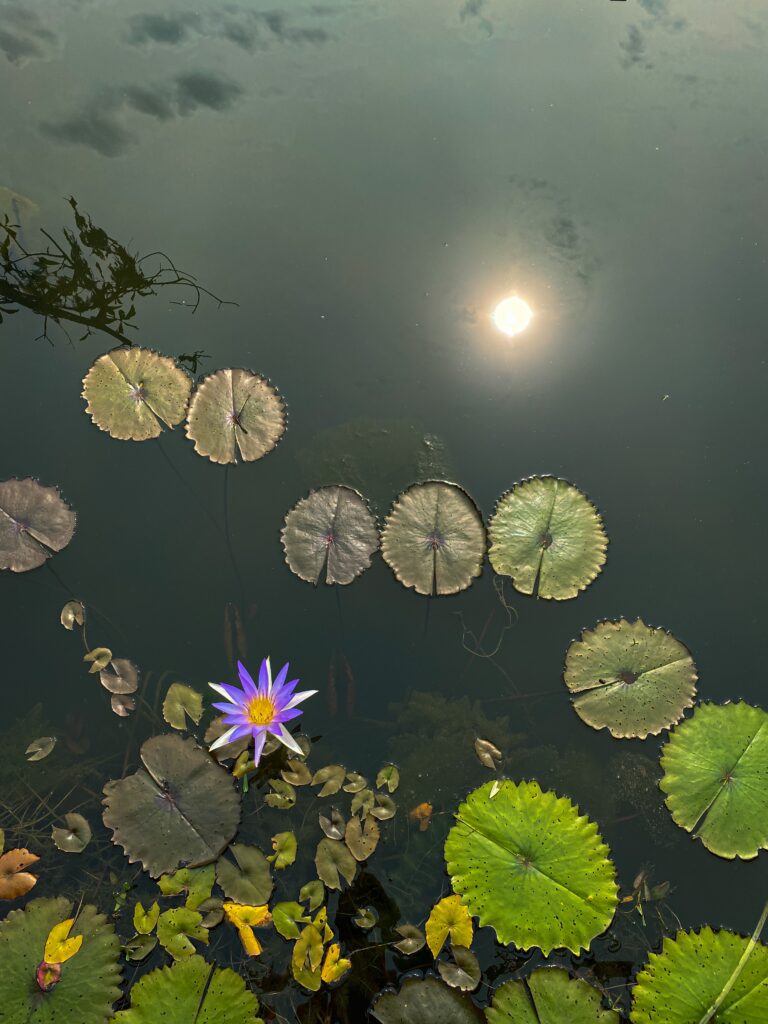

8. Ta Som
Ta Som is a more intimate and modest affair. It’s a classic Bayon-style temple, and while it might seem straightforward at first, wait until you see the grand surprise it has in store!
As you explore Ta Som, you’ll notice that it’s quieter than the larger temples. There are fewer crowds, giving you more space to admire its detailed carvings and soak in its peaceful atmosphere. Notice the devatas (goddesses) and dvarapalas (temple guardians) gracing its walls. They might not be as plentiful as in Angkor Wat, but they’re no less impressive.
Now, get ready for Ta Som’s grand reveal. As you move towards the eastern gate, you’ll come face to face with one of Angkor’s most iconic sights: a giant stone face, formed by the roots of a strangler fig tree. It’s an incredible sight, an unexpected blend of nature and architecture that will leave you in awe. It’s like the temple is giving you a cheeky wink, reminding you of the magic that ancient Angkor holds.
For us, Ta Som is like finding a hidden gem. It’s smaller, quieter, and might not be the first temple you think of when you plan your visit to Angkor. But once you’re there, you’ll see that size isn’t everything. It’s easily one of the most memorable and recognizable temples for us.
What to Know Before Visiting Ta Som
Location: Ta Som
Opening Hours: 7:30 AM – 5:30 PM
Pro-tips:
- You have to make it to the end to see Ta Som’s highlight! We’ve seen people who thought it was just the same as other temples and turned back half-way! Boy oh boy, we were so sad for them.
- Even for us, we thought just the same bust pushed forward just to make sure we haven’t missed anything and were greatly rewarded.
- Ta Som taught us to not take any of the Angkor temples for granted!


9. Ta Keo
Ta Keo, the “Mountain with Bronze Peaks.”
This temple is a little different from the rest. When you visit, you might notice that its walls are devoid of the carvings typical of Khmer temples. That’s because Ta Keo is thought to be an “unfinished” temple. Legend has it that construction was abandoned after a lightning strike which was considered a bad omen.
But don’t let its unfinished status fool you! Ta Keo has its own unique charm. Constructed entirely of sandstone, this five-tiered pyramid-style temple is an imposing sight, representing Mount Meru, just like many of the other temples in Angkor Park. I for one, think its minimalist aesthetic gives it a sense of raw beauty.
Climbing up the steep stairways to the top of Ta Keo was quite a handful (make sure you’re wearing good shoes!)
Ta Keo is one of the first temples to be built entirely of sandstone and one of the earliest temples built under the reign of Jayavarman V, a young, ambitious king who came to the throne in his early teens.
What to Know Before Visiting Ta Keo
Location: Ta Keo
Opening Hours: 7:00 AM – 5:30 PM
Pro-tips:
- It’s best to pick your battles wisely, climbing every temple up and down around Angkor Park can whittle down your energy, but at the same time, we loved climbing up every temple just for the sake of it!
- The vendors we encountered here were very kind! They gave us free water!
10. Phnom Bakheng
From small wonders, we’re taking a grand step up – literally! Get ready for Phnom Bakheng, a temple that will challenge your stamina and reward you with one of the most unforgettable views in all of Angkor.
Phnom Bakheng, the “Mountain of Kailash,” stands proudly on a hill, dominating the flat landscape of Angkor. It’s one of the oldest temples in the area, constructed in the late 9th century, and it’s considered the first mountain temple built in Angkor.
It’s also one of the best spots to catch a sunset in Siem Reap. After a day of exploring the temples, make your way up the hill to take in the mesmerizing view. It’s a sight that’s hard to put into words, but let’s just say, it’s the kind of view that makes you feel like you’re on top of the world.
The climb up to Phnom Bakheng is a bit of a trek. And it’s worth remembering that the temple has a visitor limit to preserve its structure, so try to head up early to secure your spot.
What to Know Before Visiting Phnom Bakheng
Location: Phnom Bakheng
Opening Hours: 7:00 AM – 6:30 PM
Pro-tips:
- There are two paths going up, the easy man-made route and the difficult but more natural monk’s route. Take your pick, I prefer the latter as it feels like the temple makes you work much harder for it.
- As mentioned, there is a visitor limit, so get there early if you want to catch the sunset.
- It’s better to save this temple for the later part of the day, at the same time it’s also worth it to consider saving energy to attempt the hike.

11. Baphuon Temple
Baphuon Temple, the majestic pyramid of Angkor! Constructed in the 11th century under King Udayadityavarman II, Baphuon was built as the state temple, and at the time, it was one of the most spectacular structures of the empire.
Baphuon is one of those secret temples, but it makes me wonder why because this temple is much grander and unique than a lot of the other temples on the list.
The unique pyramid shape of Baphuon, with its five-stepped terraces, gives it an awe-inspiring presence. But, Baphuon has a few surprises up its sleeve.
An intriguing element that’s sure to catch your attention is the set of lithic circles, carved into the stone floor on the uppermost tier. The purpose of these circles is still a mystery, adding to the allure of Baphuon.
What to Know Before Visiting Baphuon Temple
Location: Baphuon Temple
Opening Hours: 7:30 AM – 5:00 PM
Pro-tips:
- From Baphuon Temple, you can visit other secret sites such as the Phimineakas, Terrace of the Elephants, and Terrace of the Leper King!
- It’s possible to visit them all on foot as they are in close proximity to each other, refer to the link above and consult Google Maps to see for yourself.


12. Roluos Group
The Roluos Group – a collection of some of the earliest temples in the Angkor region. If Baphuon Temple was a hidden gem, the Roluos Group is a treasure trove.
The Roluos Group, located about 13 km (8 mi) east of Siem Reap, comprises of four significant temples: Preah Ko, Bakong, Lolei, and Prei Monti. These temples were built in the late 9th and early 10th centuries during the reign of the Khmer king Indravarman I, making them older than even Angkor Wat and Bayon.
Preah Ko, the “Sacred Bull,” is the oldest of the three. This temple is dedicated to Shiva and features six brick towers set on a sandstone platform, adorned with intricate carvings and freizes. The temple’s name comes from the statues of Nandin, Shiva’s bull mount, that once guarded the entrances.
Next up is Bakong, the first temple mountain of sandstone constructed by the Khmer. This pyramid-like temple has a unique charm with its surrounding moat. It’s the grandest temple out of the entire group.
Lolei, originally an island temple set in the middle of the now-dry Indratataka Baray (reservoir). Although smaller and more worn than the other two, Lolei offers beautiful carvings to admire, especially the Sanskrit inscriptions on its doorposts.
Finally, the infamous Prei Monti. This one is really special for us because we literally got lost in the jungles looking for it. Oh it was a fiasco, we ended up wasting an hour but didn’t want to give up. Double-backing and double-downing only to find a crumbling temple in such a sorry state. What a twist of fate, the irony! The laughs we had were much worth it though, even when we got stuck on the road on the way to Angkor Park as our e-bikes ran out of battery! It remains of my fondest memories of Cambodia.
What to Know Before Visiting the Rolous Group
Location:
Opening Hours: 7:30 AM – 5:30 PM
Pro-tips:
- The journey towards Rolous Group takes you across beautiful farmlands with lush greenery and towering palm trees, it’s an amazing way to experience the countryside.
- Prei Monti ain’t worth it but interacting with the kids at the nearby school made it worth it.
- There’s also a modern Wat near Bakong which provides an amazing contrast of old meets new.
- Be careful not to mess with the monkeys near Bakong.

13. Banteay Samre
Often overshadowed by the larger, more famous temples, this off-the-beaten-path temple is a peaceful sanctuary.
Named after the Samre, an ancient people of the Angkor region, Banteay Samre is also another off-the-beaten-path temple. It’s located a bit further out from the main temple circuit, which means fewer crowds and a more intimate experience.
The charm of Banteay Samre lies in its harmony with the surrounding nature. It’s not uncommon to hear birds chirping overhead or to see butterflies fluttering among the ruins. The temple’s remote location adds to its almost dreamy atmosphere.
What to Know Before Visiting Banteay Samre
Location: Banteay Samre
Opening Hours: 7:30 AM – 5:30 PM
Pro-tips:
- Banteay Samre is an off-the-beaten-path temple that takes you to a very rust-colored dirt road, a terrain we haven’t seen before.
- There’s a bathroom here which is quite rare actually! I recommend washing the sweat off your face, it feels so refreshing!
- You’ll most likely have it all to yourself!
Plan Your Trip to Siem Reap | Best Travel Resources
Book Your Accommodations
- Booking.com – the world’s leading online booking platform for accomodations around the world, they have an extensive amount of available listings with zero booking fees and best price guarantees.
- Hostelworld – a backpacker’s best friend, Hostelworld has the largest collection of hostels and guesthouses for affordable prices.
Don’t Forget Insurance
- SafetyWing – from Nomad Insurance, an insurance by nomads for nomads. They understand our lifestyle well and have really comprehensive and flexible plans that cater to any traveler.
Find Cheap Flights
- Kiwi.com – my go-to for booking and finding the cheapest flights and it’s helped me save tons of money. They do virtual interlining which is connecting flights from airlines that do not codeshare, so you can find routes that you wouldn’t be able to find normally.
Join Tours & Activities
- GetYourGuide – is one of the best places to find unique tours and activities. I found that it’s an excellent way to meet fellow travelers and create fond memories. They are not only limited to tours as they also offer niche services such as skip-the-line tickets or private transfers.
Catch a Ride
- Rentalcars.com – nothing beats the freedom of the road, Rentalcars.com is the world’s largest online car rental service. They operate across 160 countries so they’re the perfect partner to work with if you find yourself wanting a ride.

